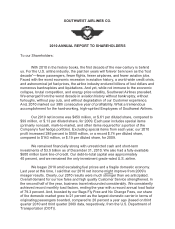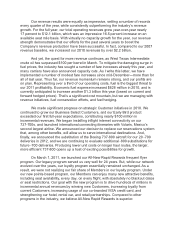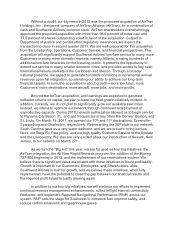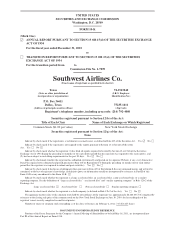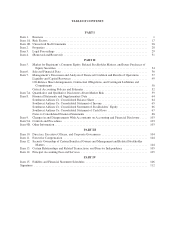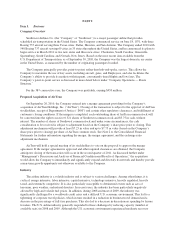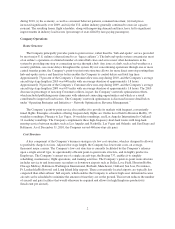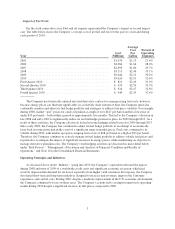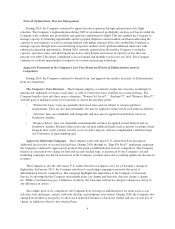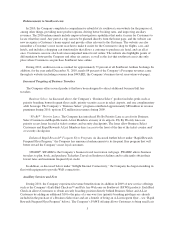Southwest Airlines 2010 Annual Report Download - page 10
Download and view the complete annual report
Please find page 10 of the 2010 Southwest Airlines annual report below. You can navigate through the pages in the report by either clicking on the pages listed below, or by using the keyword search tool below to find specific information within the annual report.Network Optimization; Revenue Management
During 2010, the Company continued to approach route expansion through optimization of its flight
schedule. The Company’s implementation during 2009 of an enhanced profitability analysis tool has provided the
Company with visibility into profitability and network contribution by flight. This has enabled the Company to
manage capacity by trimming unprofitable and less popular flights in certain markets and then reallocating the
capacity to new markets, as well as existing markets with higher demand. It has also enabled the Company to
manage capacity through more seasonal flying in specific markets and to publish additional itineraries with
enhanced connecting opportunities. During 2010, network optimization allowed the Company to redeploy
capacity, open new cities, and add frequencies in key cities despite an increase in capacity of less than one
percent over 2009. The efforts contributed to record annual and monthly load factors for 2010. The Company
continues to evaluate opportunities to improve its revenue and pricing technology.
Aggressive Promotion of the Company’s Low Fare Brand and Points of Differentiation from its
Competitors
During 2010, the Company continued to benefit from, and aggressively market, its points of differentiation
from its competitors.
The Company’s Fare Structure. The Company employs a relatively simple fare structure, featuring low,
unrestricted, unlimited, everyday coach fares, as well as even lower fares available on a restricted basis. The
Company bundles fares into three major categories: “Wanna Get Away®,” “AnytimeSM,” and “Business Select®,”
with the goal of making it easier for Customers to choose the fare they prefer.
• “Wanna Get Away” fares are generally the lowest fares and are subject to advance purchase
requirements. They are also non-refundable, but may be applied to future travel on Southwest Airlines.
• “Anytime” fares are refundable and changeable and may also be applied toward future travel on
Southwest Airlines.
• “Business Select” fares are refundable and changeable and may be applied toward future travel on
Southwest Airlines. Business Select fares also include additional perks such as priority boarding, bonus
frequent flyer credit, priority security access in select airports, and one complimentary adult beverage
(for Customers of legal drinking age).
Aggressive Marketing Campaign. The Company is the only major U.S. airline that does not impose
additional fees for first or second checked bags. During 2010, through its “Bags Fly Free®” marketing campaign,
the Company continued to aggressively promote this point of differentiation from its competitors. The Company
believes its decision not to charge for first and second checked bags, as reinforced by the Company’s related
marketing campaign, has driven an increase in the Company’s market share and a resulting significant increase in
revenues.
The Company is also the only major U.S. airline that does not impose a fee for a Customer’s change in
flight plans. In January 2011, the Company introduced a marketing campaign to promote this point of
differentiation from its competitors. The campaign highlights the importance to the Company of Customer
Service by showing that the Company understands plans can change and therefore does not charge a change
fee. While a Customer may pay a difference in airfare, the Customer will not be charged a change fee on top of
any difference in airfare.
Also unlike most of its competitors, the Company does not impose additional fees for items such as seat
selection, fuel surcharges, snacks, curb-side checkin, and telephone reservations. During 2010, the Company also
changed its stroller/car seat policy to allow each ticketed Customer to check one stroller and one car seat free of
charge, in addition to the two free checked bags.
4

